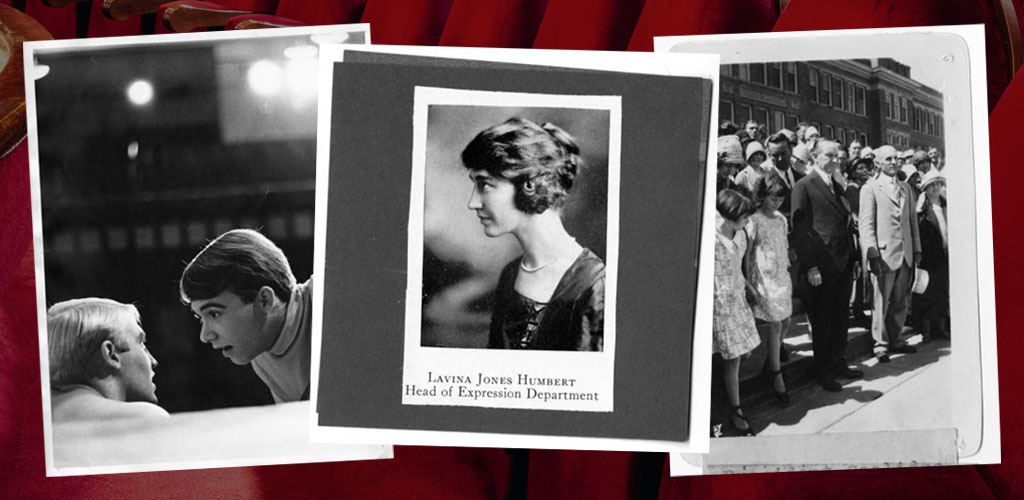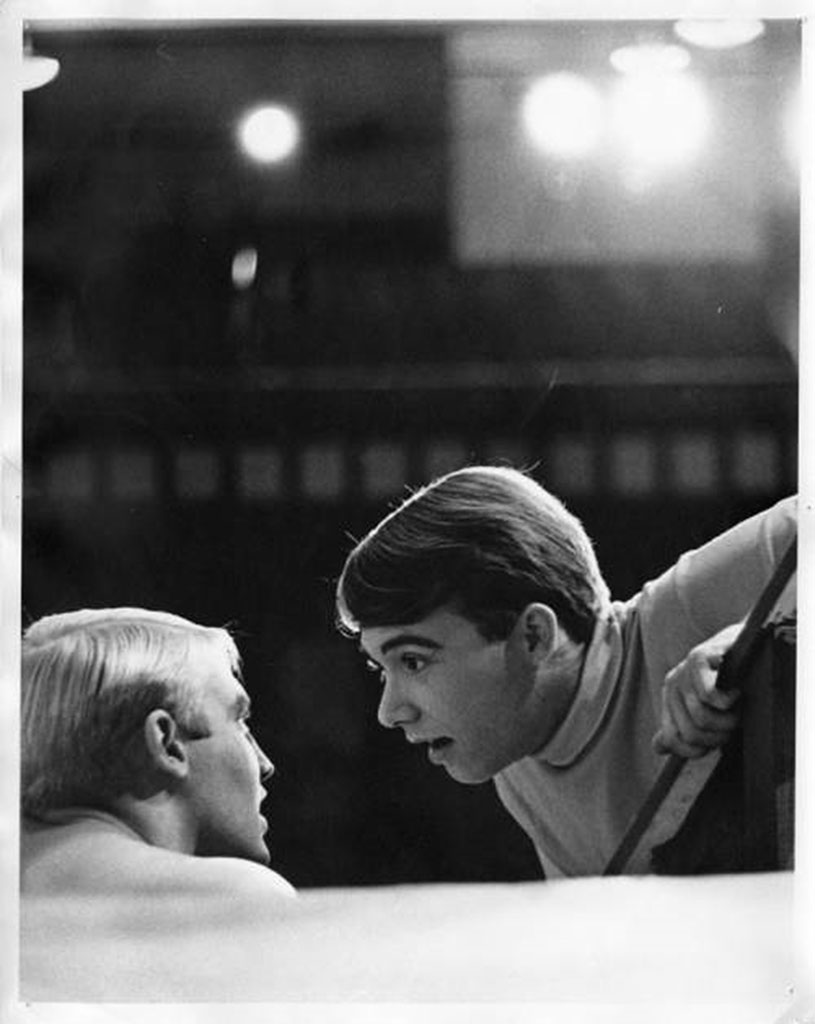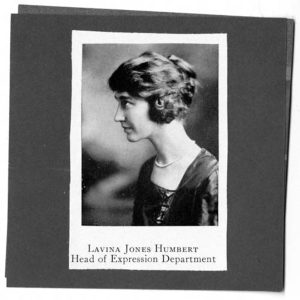Blue-gloved hands carefully hold the delicate Black and White photograph of two young actors in character. The caption reads, “Black Hills State College, Picnic, Fall 1968”. This is nowhere near enough information to make a case. As curiosity is heightened, and questions flood my mind, the photo finds its place back in the thin cardboard accordion file box. No answers echo back, and the only sound that can be heard is the latex snapping as the blue gloves come off.
No, this is not the opening scene of a crime series set in a forensic lab. The primary goal at the start of this investigation was to look to the past for memories that could honor the upcoming celebration of Black Hills State University, as they finish their remodel of the Woodburn Theater. For a university with a theatre presence dating back to 1904, it seemed necessary to gather historical photographs and write a brief article on the history and importance of the past as we venture into the unknowns of tomorrow.
I never thought for one moment that stepping into the photo collection of so many John and Jane Doe’s of a largely undocumented theatre past would inspire this writer to take up the plea of those who have for decades been left voiceless and in need of a narrator. I was both inspired and held captive by the tremendous burden of the responsibility that this new obligation of delicacy would require of me. I must write for them, I must tell their stories, and I must find a way for those who mattered once to matter again. Sue Monk Kidd, author of The Secret Life of Bees, sums up these exact sentiments by saying, “Stories have to be told or they die, and when they die, we can’t remember who we are or why we’re here” (Kidd).
If this idea of telling stories and preserving our history can be summed up in a word, and in the world of theater, that word is tradition. For Casey Hibbert, current director of the Black Hills State University Theatre Department, this word has a special significance. In a recent interview, Hibbert described tradition as vital to culture and society’s identity, suggesting that losing these traditions would also mean losing our sense of self (Hibbert 2025, 4:15). Hibbert’s ideals fall in line with the words of Sarah Churchwell, who says that “The loss of cultural memory is a kind of death, for culture is sustained by memory” (Churchwell).
Not only does the word tradition have a literal value in context to the Black Hills State theater, but in the most serendipitous way, it is the metaphorical essence of this new era for the University theater. The very first show set to take the stage in the newly remodeled Woodburn Theater in March of 2026 will be Fiddler on the Roof. It is no coincidence that Hibbert chose this piece of iconic musical theater to represent the respectful appreciation of all the traditions that have brought this University through one hundred and twenty-two years of drama and Woodburn Theater’s makeover on its eighty-second Birthday. To appreciate the metaphorical tribute that Fiddler on the Roof represents, it is important to mention that the musical score opens the show with the emotionally powerful song “Tradition”.
When Hibbert started teaching at Black Hills State in the Fall of 2023, he witnessed a decline in the traditions that once characterized the University. Significant programming, such as Props and Liners, the oldest organization on campus, with 105 years of affiliation, had fallen to the wayside. He says that, like in Fiddler on the Roof, where they open with the idea of all of us all having our customs and traditions, the things that make us who we are, that this gives us a sense of purpose, and in some ways as we have neglected our tradition, we have lost this sense of purpose. His goal, he says, is to bring back these things that were the department’s traditions, the organizations, competitions, and standing room only shows that give the students something to look forward to, a sense of accomplishment, and also allow the community something to hope and watch with excitement and pride for (Hibbert, 2025, 4:25).
This respectful approach is in line with French philosopher Jean Jaurès, who is believed to have said that “Tradition does not mean to look after the ashes, but to keep the flame alive.”
This flame has been reignited at Black Hills State University. Although we cannot know for sure, I am confident in saying that past directors like Lavina Humbert, Darell Woolwine, and Al Sandau would be grateful to know that their hard work and legacy of keeping the flame going have endured long after their time in the director’s chair at the University.
In an Interview with respected author and historian Paul Higbee, he said that when Lavina Humbert started the theater department, there was a big emphasis on involving the community, the idea was that we live in the rural west, and people are really starved of the performing arts unless we provide it. He goes on to say that in the 1970s, some of that changed as the area opened up and touring entertainers began to visit (Higbee, 2025, 15:15).
Lavina Humbert was ever so right to make it a focus. In her dedication to building that presence, she also insisted that it wasn’t just a hobby or something to entertain people with, that it had a far more critical role in people’s lives. Little would she know that her initiative would be so crucial in shaping the Black Hills’ cultural image. Lavina had a University mindset even before the school became more than just a teacher’s college.
Paul Higbee has studied the impact of Lavina Hall, and one story of great significance to him is that in 1943 and 1944, the College was home to the 93rd Army Air Division. These men were trying to become officers so they could become World War II pilots and navigators; the requirement was to have 2 years of college. Over 1000 men came and studied at the college, and at the time, Lavina Humbert taught Theater Arts. She told the administration that if these men were to have confidence and bearing, they could get it in the theater arts. The administration and the US Army at the highest level agreed. “There was no doubt in Lavina Humbert’s mind that wherever you go, wherever this world takes you, your theater arts background will be a part of who you are” (Higbee, 2025, 25:30).
It rings true that this legacy of preservation of our culture, of our traditions, of our identity is connected to the theater arts, and I can only wonder if Lavina Humbert’s drive to keep this flame alive was influenced by another great thinker of her time, President Calvin Coolidge.
The President visited the College campus in 1927, right after the building of Woodburn Hall. He is known for saying, “There have been great men with little of what we call education. There have been many small men with a great deal of learning. There has never been a great people who did not possess great learning” (Coolidge). Humbert may never have heard those inspirational words, but she dedicated her life to improving the world through the Theater Arts and seemed convinced that the “great learning” included the Arts and also contributed to who those people would become.
Black Hills State University has had many stories, many that sadly, have been forgotten or untold. But by keeping tradition alive through theater, the stage will always be a place where stories come alive and where the artists who serve as the conduits for those stories create memories and stories of their own. The telling of stories on the stage is the tradition that leaves a legacy that echoes further into emptiness than other traditions can reach. This echo is a reminder not that we would be keepers of the ashes, but for those who kept the flame burning, we shall keep the flame going just a little longer still.
this story courtesy of,
Melita Quinonez
8/12/2025
Works Cited
Churchwell, Sarah. BEHOLD, AMERICA : A History of America First and the American Dream. Bloomsbury Publishing, 2019.
Coolidge, Calvin. The Price of Freedom : Speeches and Addresses. “Thought, The Master Of Things,” on July 7, 1921, Fredonia, 2001.
DLSD. “ E. C. Woodburn with Students and President Calvin Coolidge.” Black Hills State University Archives, 1927, cdm17102.contentdm.oclc.org/digital/iiif/bhsuarchive/1654/full/864,/0/default.jpg. Accessed 10 Aug. 2025.
—. “ Portrait of Lavina Humbert.” Black Hills State University. Leland D. Case Library, cdm17102.contentdm.oclc.org/digital/iiif/bhsuarchive/1606/full/864,/0/default.jpg. Accessed 10 Aug. 2025.
—. “Theater Productions: ‘Picnic,’ Fall 1968.” Black Hills State University. Leland D. Case Library, 31 Oct. 1968, cdm17102.contentdm.oclc.org/digital/collection/bhsuarchive/id/1165. Accessed 27 July 2025.
Hibbert, Casey. The Future of Black Hills State Theater as It Relates to the Past. Interview by Melita Quinonez, 25 July 2025.
Higbee, Paul. The Past Events of Theatre at BHSU . Interview by Melita Quinonez, 6 Aug. 2025.
Sue Monk Kidd. The Secret Life of Bees. Penguin Books, 2002.












